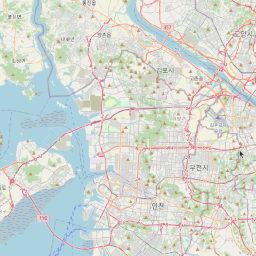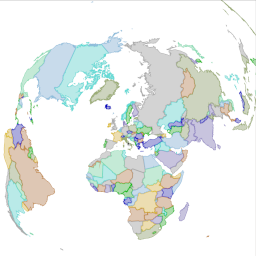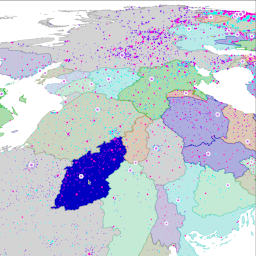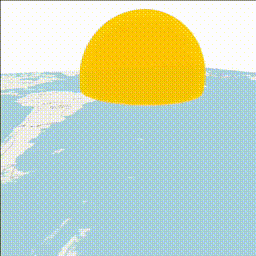Galileo is a general purpose cross-platform geo-rendering library.
- Raster tile layer (OSM)
- Vector tile layer (Maplibre)
- Use buttons at the top to change the style of the map
- Click on any object to get information about it
- Feature layer
- NOTE! Contains large dataset (~16 MB), might take some time to load
- Draws 250 countries' borders, consisting of ~4000 polygons with ~500K vertices, plus 40K city points
- Move mouse pointer to highlight any country, click on a country to write its name into console
- Map in Lambert Equal Area projection
- Takes data set (country borders) in Mercator projection and draws it to the map in LAEA projection
- Very many points
- Enjoy 3.6 million points heat up your room with GPU.
Architecture of Galileo is designed specifically to allow different modes of use:
- client GUI mapping applications
- server modules
- CLI tools
This does bring certain challenges and adds to complexity. For example, caching of loaded and rendered objects works completely differently in server in client applications. Galileo is designed in such a way as to allow the user of the library to make all the relevant decisions and not to force one way.
It also does not make any assumptions about tile layer schemas, CRS and datums. Feature layers support transparent re-projecting into the map CRS (support for projecting tile layers is planned but not implemented yet).
At the moment Galileo uses wgpu backend to render the map. This means that
it can be used on any platform that wgpu supports:
- All major desktop platforms: Linux, MacOS, Windows
- Mobile platforms: Android, iOS
- Web though compiling to WASM (and using either WebGL or newer and cooler WebGPU)
Still, the backend is not integral part of the Galileo design, so we will probably try other promising backends (like vello).
Galileo is an active WIP, here is the list of the features that are already present:
- raster tile layers
- vector tile layers with styling
- vector geo-data layers (feature layers) with styling
- 3d view and 3d object rendering
- user-input handling on layers (mouse only at the moment, touch is WIP)
- support for different projections and tile schemes
- high performance
There are examples in galileo crate that can be run with cargo run --example <name>
command. Web examples are separate creates in wasm_examples directory. These are
excluded from the workspace (because Cargo does not like cross-platform workspaces).
To run those you will need to install wasm-pack:
wasm-pack build wasm_examples/countries --target no-modules --releaseAfter that open index.html in your browser (must be served from localhost, use your
favourite developer server).
Install the target:
rustup target add x86_64-px-window-gnuInstall cross-linker. For Debian/Ubuntu:
sudo apt-get install mingw-w64
And then build it:
cargo build --target x86_64-px-windows-gnuIf you think this library can be useful to you or someone you love, consider supporting its development. Sponsoring comes with additional advantages:
- Increase development speed. All funds will be spent on development.
- Make your needs our priority.
- See your logo on the project's page.
Please, contact the maintainer of the project with any questions related to sponsoring.
You can use this library without any worries as it is licensed under either of
- Apache License, Version 2.0 (LICENSE-APACHE or http://www.apache.org/licenses/LICENSE-2.0)
- MIT license (LICENSE-MIT or http://opensource.org/licenses/MIT)
at your option.
Feature requests, pull requests, bug reports, comments, questions and discussion are welcome. Please, follow the code of conduct when contributing.
Note, that since the library is still in early stages of development, any part may change at any moment. So before starting any major undertaking with it or within it, open a discussion to sync your ideas with others' ideas.



